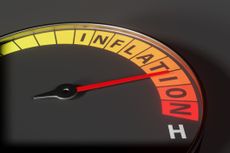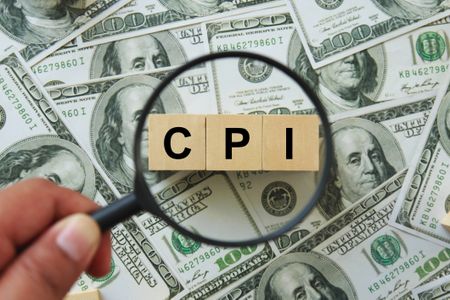2014 Interest-Rate Outlook: Higher Rates for Borrowers, Little Change for Savers
The spread between short-term and long-term rates will grow. Here's what that means to you.

Rising interest rates have been the talk of Wall Street—and Main Street—for months. Despite the recent fluctuation in yields, the return on ten-year Treasuries has climbed more than one-half percentage point over the past 12 months, to 2.7%, and Kiplinger’s expects yields to reach 3.5% by the end of 2014.
But not all rates are rising. The rates you earn on your savings accounts and on money market funds haven’t budged, and that’s not expected to change.
That’s because short-term rates are “anchored” by the Federal Reserve’s monetary policy, says Warren Pierson, a fixed-income strategist at Robert W. Baird, an asset-management firm in Milwaukee. The Fed controls the federal funds rate—the rate that certain banks charge each other for overnight loans—which in turn guides other short-term rates. That rate has been set at nearly zero since late 2008, and the Fed has said it will stick with its strategy until unemployment falls below 6.5%, which isn’t expected until 2015.

Sign up for Kiplinger’s Free E-Newsletters
Profit and prosper with the best of expert advice on investing, taxes, retirement, personal finance and more - straight to your e-mail.
Profit and prosper with the best of expert advice - straight to your e-mail.
Longer-term rates, however, are driven by the market—that is, bond buyers and sellers. Until recently, the Fed’s purchases of Treasuries and mortgage bonds have successfully held down long-term rates. As the economy improves and those purchases continue to shrink, long-term rates will rise. Here’s how the changing landscape will affect savers and borrowers.
Investors. Rising rates can do damage to your bond assets because when rates rise, bond prices fall. But it’s not wise to jettison bonds altogether (see 4 Bond Portfolios for More Income, Less Risk). So with short-term rates stuck and long-term rates on the rise, the best place to be is in intermediate-term corporate and government bond funds with maturities of six to seven years, says Jeff Moore, a fixed-income fund manager at Fidelity. If the threat of rising rates still keeps you up at night, stick with short-term investment-grade bond funds, such as Vanguard Short-Term Investment-Grade (symbol VFSTX).
Savers. Interest rates on money market accounts, savings accounts and shorter-term certificates of deposit will not climb much this year, if at all, says Greg McBride, of Bankrate.com. “Rates on three-year CDs and up could rise a quarter of a percentage point,” he says. Boost yields without locking in low rates by laddering CDs with maturities of one to five years, with average yields ranging from 0.22% to 0.79%. Credit unions can often do better: The rate on a five-year CD from PenFed with a $1,000 minimum deposit is 2.0%.
Borrowers. Mortgage rates—even initial rates on adjustable-rate loans—will grind higher in 2014, says McBride. Kiplinger’s expects the 30-year fixed-rate mortgage, recently just over 4.4%, to rise to 5% or 5.5% by year-end. That won’t halt the real estate recovery. A one percentage point rise from current rates means an extra $61 in monthly payments on a $100,000, 30-year loan. Still, consider locking in your rate once you have set your closing date. For credit cards and home-equity loans, 2014 could be the last hurrah for low rates, says McBride. Pay down your variable-rate debt before rates rise.
Get Kiplinger Today newsletter — free
Profit and prosper with the best of Kiplinger's advice on investing, taxes, retirement, personal finance and much more. Delivered daily. Enter your email in the box and click Sign Me Up.

Nellie joined Kiplinger in August 2011 after a seven-year stint in Hong Kong. There, she worked for the Wall Street Journal Asia, where as lifestyle editor, she launched and edited Scene Asia, an online guide to food, wine, entertainment and the arts in Asia. Prior to that, she was an editor at Weekend Journal, the Friday lifestyle section of the Wall Street Journal Asia. Kiplinger isn't Nellie's first foray into personal finance: She has also worked at SmartMoney (rising from fact-checker to senior writer), and she was a senior editor at Money.
-
 Why Does the Fed Prefer PCE Over CPI?
Why Does the Fed Prefer PCE Over CPI?Inflation has been top of mind for lots of folks in recent years. Most of Wall Street follows the CPI but the Fed favors the PCE. Here's why.
By Charles Lewis Sizemore, CFA Published
-
 Five Great Places to Live in Wyoming
Five Great Places to Live in WyomingWhether you prefer the buzzy affluence of Jackson Hole, rodeo towns or mountain towns, Wyoming should be on any nature lover’s list.
By Drew Limsky Published
-
 What DOGE is Doing Now
What DOGE is Doing NowThe Kiplinger Letter As Musk's DOGE pursues its ambitious agenda, uncertainty and legal challenges are mounting — causing frustration for Trump.
By Matthew Housiaux Published
-
 A Move Away From Free Trade
A Move Away From Free TradeThe Letter President Trump says long-term gain will be worth short-term pain, but the pain could be significant this year.
By David Payne Published
-
 Trump’s Whirlwind Month of Crypto Moves
Trump’s Whirlwind Month of Crypto MovesThe Kiplinger Letter The Trump administration wants to strengthen U.S. leadership in the cryptocurrency industry by providing regulatory clarity.
By Rodrigo Sermeño Published
-
 CPI Report Puts the Kibosh on Rate Cuts: What the Experts Are Saying About Inflation
CPI Report Puts the Kibosh on Rate Cuts: What the Experts Are Saying About InflationCPI Consumer price inflation reared its ugly head to start the year, dashing hopes for the Fed to lower borrowing costs anytime soon.
By Dan Burrows Published
-
 What To Know if You’re in the Market for a New Car This Year
What To Know if You’re in the Market for a New Car This YearThe Kiplinger Letter Buying a new car will get a little easier, but don’t expect many deals.
By David Payne Published
-
 Fed Leaves Rates Unchanged: What the Experts Are Saying
Fed Leaves Rates Unchanged: What the Experts Are SayingFederal Reserve As widely expected, the Federal Open Market Committee took a 'wait-and-see' approach toward borrowing costs.
By Dan Burrows Published
-
 What Could Derail the Economy This Year?
What Could Derail the Economy This Year?The Letter While the outlook for the U.S. economy is mostly favorable, there are plenty of risks that bear watching.
By David Payne Published
-
 CPI Report Keeps the Fed on Track: What the Experts Are Saying About Inflation
CPI Report Keeps the Fed on Track: What the Experts Are Saying About InflationCPI Disinflation in key areas of consumer prices should help the Federal Reserve stick to its policy path of gradual cuts to interest rates.
By Dan Burrows Published